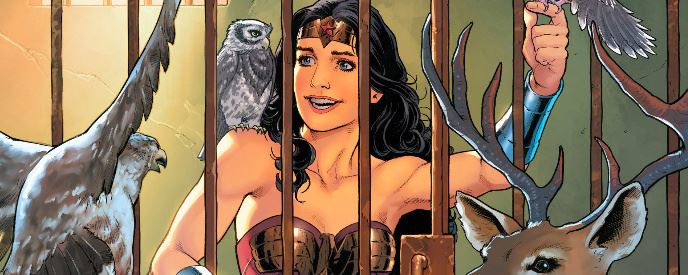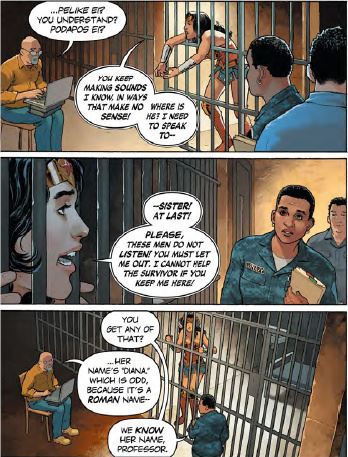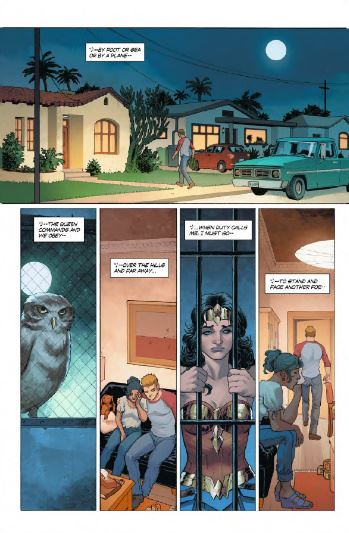Comics /
Comic Reviews /
DC Comics
Wonder Woman #6: A Review

By Zak Edwards
September 17, 2016 - 13:59
One of the best parts of any Wonder Woman origin story, and we’ve seen multiple versions over even the past few years, is when she encounters the “man’s world” for the first time. This critical moment can shed a lot of light on who the creators are and what they understand about Diana Prince, aka Wonder Woman, as a character.
 |
| Wonder Woman's frustration is sold through Nicola Scott's incredible art. |
For Grant Morrison’s
Earth One graphic novel, Diana’s first encounter with the world of man is in a hospital, where she witnesses death and sickness for the first real time. For Rucka’s Diana, she lands at a military base and subsequently gets locked in a brig. And it’s from this brig that we get an amazing glimpse into who Wonder Woman is.
For almost this entire issue, Diana is behind bars as a safety precaution, struggling to communicate with anyone and everyone. It’s strange to say, but it’s actually delightful. By being trapped behind bars, she is subjected to a wide range of emotions, and it’s in this character work that Rucka truly shines. Seeing Diana go from scared to confused to downright frustrated while people try and communicate with her is two parts funny and about five parts downright charming, especially since artist Nicola Scott is a master of body language (just look at Diana's posture as she leans into the bars). When someone finally arrives who can talk to her, Diana starts rattling off so excitedly I actually burst out laughing. The entire issue proves that, in the hands of the right team, a character can literally sit in a cell and still provide an amazing read.
Steve Trevor, meanwhile, has to tell a friend’s wife about the death of her husband in what is easily the artistic highlight of the book. Nicola Scott’s beautiful artwork gets a more subdued palette by Romulo Fajardo, Jr. this week, which is perhaps fitting since the book moves from Paradise Island to “man’s world.” The sequences of Wonder Woman in her cell, alone and scared, are interspersed with Steve giving the bad news. In one, a character becomes alienated and scared. The other, a chance to connect through horrendous circumstances. The entire sequence absolutely depends on Scott’s beautiful and emotional artwork. In the hands of a lesser artist, it would come across as strange, confusing even, but her ability to draw parallels between these two characters’ experiences makes for an emotional read.
 |
| A beautiful sequence in Wonder Woman #6. Art by Nicola Scott. Colours by Romulo Fajardo, Jr.. |
Most importantly, this issue solidifies much of the series' mythology and gives Wonder Woman many of the powers with which people are familiar. Seeing these as gifts from the gods rather than inherent powers is certainly cool, especially as they're granted by a venerable Disney forest worth of delightful critters. It also shows Diana is willing to trust and believe in people, that she is a peacekeeper first, since she gets these powers and chooses to stay locked up (until, of course, she accidentally tips the entire cell door off its hinges).
tl;dr review: If you aren’t reading Wonder Woman, you are missing out on one of Rebirth’s best series. Heartfelt, confident, and beautiful, this book is everything I could want in a Wonder Woman comic.
Last Updated: August 31, 2023 - 08:12


